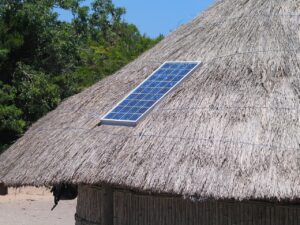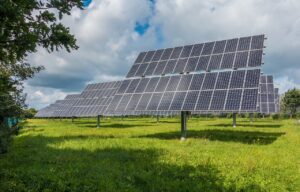
Image: By WikiImages. Pixabay
15 Interesting Facts about Solar Energy
Solar energy is a clean, renewable source of energy that is becoming increasingly popular around the world.
With concerns about global warming and the need for sustainable energy sources, many people are turning to solar energy as a viable alternative.
In this article, we discuss fifteen facts about Solar Energy that will allow you to gain deeper insights into the conversations surrounding it.
1. Solar energy is a form of renewable energy that is clean and abundant
Solar energy is a form of renewable energy that is harnessed from the sun‘s rays. Solar energy is one of the most cost-effective forms of renewable energy, as it does not require any fuel to generate electricity.
It is also one of the cleanest forms of energy, as it does not emit any pollutants or greenhouse gases. Solar energy can be used to generate electricity and heat water, as well as power a variety of devices.
Solar energy has the potential to significantly reduce reliance on non-renewable sources of energy, such as coal and natural gas, and can be used to provide a clean and reliable source of energy for homes and businesses.
2. Solar energy does not harm the environment
Solar energy is one of the most beneficial sources of renewable energy, as it does not harm the environment. Solar energy is produced from natural sources such as the sun and does not produce any pollutants or greenhouse gases. It is a clean, renewable, and sustainable energy source that can be used to generate electricity to power homes and businesses, as well as to heat water and provide lighting. As a result, solar energy helps to reduce dependence on fossil fuels, which are a major source of air pollution.
3. Solar energy has many uses in our everyday lives
From powering homes and businesses to providing energy for transportation, solar energy has become an integral part of modern life. Solar energy can be used to generate electricity, heat and cool homes and businesses, power industrial processes, and generate hot water. Solar energy can also be used to purify water and provide lighting for homes and businesses.
4. Solar energy is free

Image: bY cotrim. Pixabay
Solar energy is a free and renewable energy source that is abundant and available to us all. It is clean, non-polluting, and does not require any fuel to generate electricity. Solar energy is a great alternative to traditional sources of energy, such as fossil fuels, which are finite and can be damaging to the environment.
With solar energy, we can reduce our dependence on fossil fuels and contribute to a healthier environment. It is also cost-effective since it is free and can be used to generate electricity without having to pay for fuel.
5. The initial way to dry clothes was by using solar energy

Image: By wilhei. Pixabay
It is an inexpensive and environmentally friendly way to dry clothes, as it does not generate any pollutants and uses free, renewable energy from the sun. Solar energy is also a very efficient way to dry clothes, as the air is naturally heated by the sun and heated air is a more efficient and faster way to dry clothes than air that is artificially heated by a dryer or other appliances.
6. You can pasteurize water using solar energy
Solar pasteurization uses the energy of the sun to heat water to temperatures that kill harmful bacteria and viruses. The process is simple and requires no additional energy or materials other than the sun’s energy. For example, a simple solar water pasteurization system involves placing the water in a transparent container, or bag, and exposing it to the sun for several hours. The sunlight heats the container and the water inside, and the heat destroys the microorganisms that can cause illness. Solar pasteurization is a sustainable and cost-effective method of providing safe drinking water in areas with limited access to electricity.
7. Solar energy can be stored in thermal storage systems
Solar energy can be stored in thermal storage systems by using solar thermal collectors to absorb the sun‘s rays and then storing the heat energy in a thermal mass like water or rocks. The thermal mass is then used to heat water or air as needed. This stored energy can be used to provide cooling or heating for a building, heat water, or for other energy needs.
8. The space industry embraced solar technology

Image: By Alexas_Fotos. Pixabay
In the early 1950s, solar energy was used to generate electricity to power spacecraft and their onboard systems. Solar cells, which convert sunlight into electricity, were developed to provide a reliable source of electricity for spacecraft. This technology was incorporated into the design of early satellites and became an important part of their power system. Solar technology was also used to charge the batteries of spacecraft, allowing them to stay in orbit for extended periods.
9. Solar energy can be used for desalination
Solar energy has tremendous potential to help make saline water safe for drinking. Solar desalination is a process that uses solar energy to reduce the salt content of saline water. Solar energy is used to heat the saline water, evaporating the water and leaving behind the salt.
The pure water vapor can then be collected and condensed into drinking water. This method can be used in remote areas with limited access to fresh water, or in areas with a high concentration of salts in the water.
10. The Earth gets 174 petawatts of solar radiation for solar energy
This makes it the most abundant and reliable energy source available. This amount of energy is enough to power the entire planet several times over and has the potential to provide a sustainable, renewable source of energy. Solar energy can be used directly as heat or light, or it can be converted into electricity.
11. Solar panels increase the value of your home

Image: By PhotoMIX-Company. Pixabay
Solar panels are becoming increasingly popular among homeowners as they are a great way to increase the value of their homes.
The energy produced by solar panels can reduce a homeowner’s energy costs providing a great return on investment for a homeowner, as the value of their home can increase by up to 4% after the installation of solar panels.
Furthermore, solar panels are a great way to enhance the aesthetic of a home, as they can be placed in a variety of locations, making them visually appealing.
12. Solar energy was first used in the 7th Century
People first used solar energy in the 7th century B.C. Ancient Greeks used mirrors to concentrate the sun’s rays and heat water for bathing. The Romans also used the power of the sun to heat homes and public baths. The Chinese and Native Americans harnessed the sun’s energy to dry food, while a few cultures even used it to cook.
13. Solar photovoltaic cells convert sunlight into electricity

Image: By mrganso. Pixabay
Solar photovoltaic (PV) cells are devices that convert sunlight into electricity. PV cells are made of semiconductor materials such as silicon, which absorb the photons from the light and then create an electric current. Solar PV cells are used to generate electricity for a variety of applications, from powering homes and businesses to providing energy for satellites in space. Solar PV cells are becoming increasingly popular as a source of clean, renewable energy due to their efficiency, scalability, and relatively low cost. They require little to no maintenance and can be easily integrated into existing energy infrastructure.
14. Solar energy is the fastest-growing source of electricity in the world
Over the past decade, the cost of solar technology has dropped significantly, making it increasingly attractive to businesses, homeowners, and governments alike. Solar energy is a clean, renewable source of energy that can be used to generate electricity and hot water. The cost and environmental benefits of solar energy make it a viable option for powering homes, businesses, and communities. Additionally, solar energy is a long-term energy source that does not deplete natural resources or emit pollutants. As solar technology advances, solar energy will likely become an even more popular and widespread source of electricity in the future.
15. Solar energy is the most abundant energy source on earth

Image: By seagul. Pixabay
Solar energy is the most abundant energy source on Earth and is an important source of renewable energy. It is generated by the sun’s rays and is available in abundance, making it an ideal energy source for the future. Solar energy has the potential to provide a clean, renewable source of energy for residential, commercial, and industrial users. It has the potential to reduce reliance on fossil fuels and can even help to reduce the effects of global warming.
In conclusion, solar energy has the potential to help meet our energy needs and reduce our dependence on fossil fuels. It is also a cost-effective option that can help reduce energy costs and help create jobs in the renewable sector. With continued research and development, solar energy can become an even more viable source of energy in the future. We are now at the forefront of a renewable energy revolution, and the potential of solar energy has barely been tapped into.
For more amazing facts visit the discover walks blog.
Planning a trip to Paris ? Get ready !
These are Amazon’s best-selling travel products that you may need for coming to Paris.
Bookstore
- The best travel book : Rick Steves – Paris 2023 – Learn more here
- Fodor’s Paris 2024 – Learn more here
Travel Gear
- Venture Pal Lightweight Backpack – Learn more here
- Samsonite Winfield 2 28″ Luggage – Learn more here
- Swig Savvy’s Stainless Steel Insulated Water Bottle – Learn more here
Check Amazon’s best-seller list for the most popular travel accessories. We sometimes read this list just to find out what new travel products people are buying.










